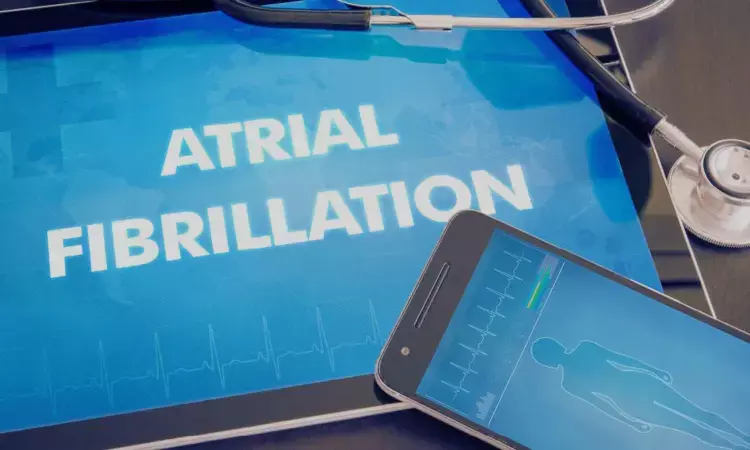- Home
- Medical news & Guidelines
- Anesthesiology
- Cardiology and CTVS
- Critical Care
- Dentistry
- Dermatology
- Diabetes and Endocrinology
- ENT
- Gastroenterology
- Medicine
- Nephrology
- Neurology
- Obstretics-Gynaecology
- Oncology
- Ophthalmology
- Orthopaedics
- Pediatrics-Neonatology
- Psychiatry
- Pulmonology
- Radiology
- Surgery
- Urology
- Laboratory Medicine
- Diet
- Nursing
- Paramedical
- Physiotherapy
- Health news
- Fact Check
- Bone Health Fact Check
- Brain Health Fact Check
- Cancer Related Fact Check
- Child Care Fact Check
- Dental and oral health fact check
- Diabetes and metabolic health fact check
- Diet and Nutrition Fact Check
- Eye and ENT Care Fact Check
- Fitness fact check
- Gut health fact check
- Heart health fact check
- Kidney health fact check
- Medical education fact check
- Men's health fact check
- Respiratory fact check
- Skin and hair care fact check
- Vaccine and Immunization fact check
- Women's health fact check
- AYUSH
- State News
- Andaman and Nicobar Islands
- Andhra Pradesh
- Arunachal Pradesh
- Assam
- Bihar
- Chandigarh
- Chattisgarh
- Dadra and Nagar Haveli
- Daman and Diu
- Delhi
- Goa
- Gujarat
- Haryana
- Himachal Pradesh
- Jammu & Kashmir
- Jharkhand
- Karnataka
- Kerala
- Ladakh
- Lakshadweep
- Madhya Pradesh
- Maharashtra
- Manipur
- Meghalaya
- Mizoram
- Nagaland
- Odisha
- Puducherry
- Punjab
- Rajasthan
- Sikkim
- Tamil Nadu
- Telangana
- Tripura
- Uttar Pradesh
- Uttrakhand
- West Bengal
- Medical Education
- Industry
Pulsed field ablation not superior to radiofrequency ablation in paroxysmal atrial fibrillation: ESC Study

Pulsed field ablation did not have superior efficacy to radiofrequency ablation in patients with drug-resistant paroxysmal (intermittent) atrial fibrillation, according to results from a late-breaking trial presented in a Hot Line session today at ESC Congress 2025.
Atrial fibrillation (AF) is the most common sustained cardiac arrhythmia. Patients whose AF is not controlled by antiarrhythmic drugs may undergo catheter ablation to disrupt the abnormal electrical pathways that cause the arrhythmia.
Principal Investigator, Professor Pierre Jaïs from the IHU LIRYC (L'Institut de Rythmologie et Modélisation Cardiaque), Bordeaux, France, explained why the trial was carried out: “Pulmonary vein isolation using thermal radiofrequency-based ablation (RFA) is a widely accepted and established treatment for antiarrhythmic drug-resistant AF. However, pulmonary vein isolation has evolved with the introduction of pulsed field ablation (PFA), which is a faster, more straightforward nonthermal procedure that potentially offers more selective tissue targeting than thermal energy sources. Other trials have compared PFA with thermal energy sources with inconclusive results.2,3 We conducted the BEAT-PAROX-AF trial to directly compare PFA with advanced RFA in patients with antiarrhythmic drug-resistant symptomatic paroxysmal AF.”
BEAT-PAROX-AF was an open-label, randomised controlled superiority trial conducted at nine high-volume centres across France, Czechia, Germany, Austria and Belgium. Eligible patients were aged 18–80 years with symptomatic paroxysmal AF that was resistant to at least one antiarrhythmic drug, with a Class I or IIa indication for AF ablation according to ESC Guidelines and effective oral anticoagulation for >3 weeks prior to the planned procedure. Patients were randomised 1:1 to pulmonary vein isolation using either single-shot PFA or point-by-point RFA following the CLOSE protocol. The primary endpoint was the single-procedure success rate after 12 months, defined as the absence of ≥30-second atrial arrhythmia recurrence, cardioversion, Class I/III antiarrhythmic drug resumption after a 2-month blanking period or any repeat ablation. For follow-up, participants were instructed to perform weekly self-recorded single-lead ECGs and to capture recordings during symptomatic episodes using a mobile ECG system.
A total of 289 patients were analysed who had a mean age of 63.5 years and 42% were female. The mean duration of drug-resistant AF was 39 months.
The primary endpoint, single-procedure success at 12 months, was high and similar between the procedure types: 77.2% in the PFA group and 77.6% in the RFA group, with an adjusted difference of 0.9% (95% confidence interval [CI] –8.2 to 10.1; p=0.84).
The mean total procedure duration was significantly shorter for PFA (56 vs. 95 minutes), with an adjusted difference of −39 minutes (95% CI −44 to −34).
Overall, the safety profile was excellent in both groups. Procedure-related serious adverse events Including unplanned or prolonged hospitalisations occurred in 5 patients (3.4%) in the PFA group and 11 patients (7.6%) in the RFA group. Complications appeared more frequent with RFA. One transient ischaemic attack was observed with PFA, while two tamponade percutaneously drained and two cases of pulmonary vein stenosis >70% were observed with RFA. Pulmonary vein stenosis >50% occurred in 12 patients and 15 patients, respectively. No deaths, persistent phrenic palsy or stroke occurred.
Professor Jaïs concluded: “Both PFA and RFA using the CLOSE protocol showed excellent and similar efficacy. Single-procedure success rates were comparable, although there appeared to be fewer complications and a shorter procedure time with PFA.”
Dr Kamal Kant Kohli-MBBS, DTCD- a chest specialist with more than 30 years of practice and a flair for writing clinical articles, Dr Kamal Kant Kohli joined Medical Dialogues as a Chief Editor of Medical News. Besides writing articles, as an editor, he proofreads and verifies all the medical content published on Medical Dialogues including those coming from journals, studies,medical conferences,guidelines etc. Email: drkohli@medicaldialogues.in. Contact no. 011-43720751


